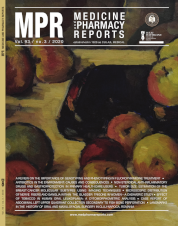Clinical occlusion analysis versus semi-adjustable articulator and virtual articulator occlusion analysis
DOI:
https://doi.org/10.15386/mpr-1595Keywords:
occlusion analysis, semi-adjustable articulator, 3ShapeAbstract
Background and aims. Identifying the optimal method for occlusion analysis by comparing examination sensitivity of the static and dynamic occlusion using three systems: clinical occlusion analysis, semi-adjustable articulator and virtual articulator (3Shape, Denmark) occlusion analysis.
Methods. The occlusion analysis of sixteen patients was performed using the three systems. In order to analyze the number of concordant and discordant points and trajectories, the clinical method was compared to the semi-adjustable articulator and to the computerized method.
Results. The greatest correspondence was obtained by comparing the clinical and the articulator methods, having a success rate of 85.25%, versus the clinical and the computerized method with a success rate of 73.25%. The propulsion registered the highest discrepancies: 35% in case of the semi-adjustable articulator comparison and 62% in case of the virtual articulator comparison.
Conclusions. The semi-adjustable articulator was superior in static and dynamic occlusion analysis compared to the virtual articulator. The analysis of the dynamic occlusion is the most problematic due to its dependency on the individual anatomy of the glenoid fossa which cannot be exactly reproduced by any articulator.
Downloads
Published
How to Cite
Issue
Section
License
The authors are required to transfer the copyright of the published paper to the journal. This is done by agreeing to sign the Copyright Assignment Form. Whenever the case, authors are also required to send permissions to reproduce material (such as illustrations) from the copyright holder.

The papers published in the journal are licensed under a Creative Commons Attribution-NonCommercial-NoDerivatives 4.0 International License.

